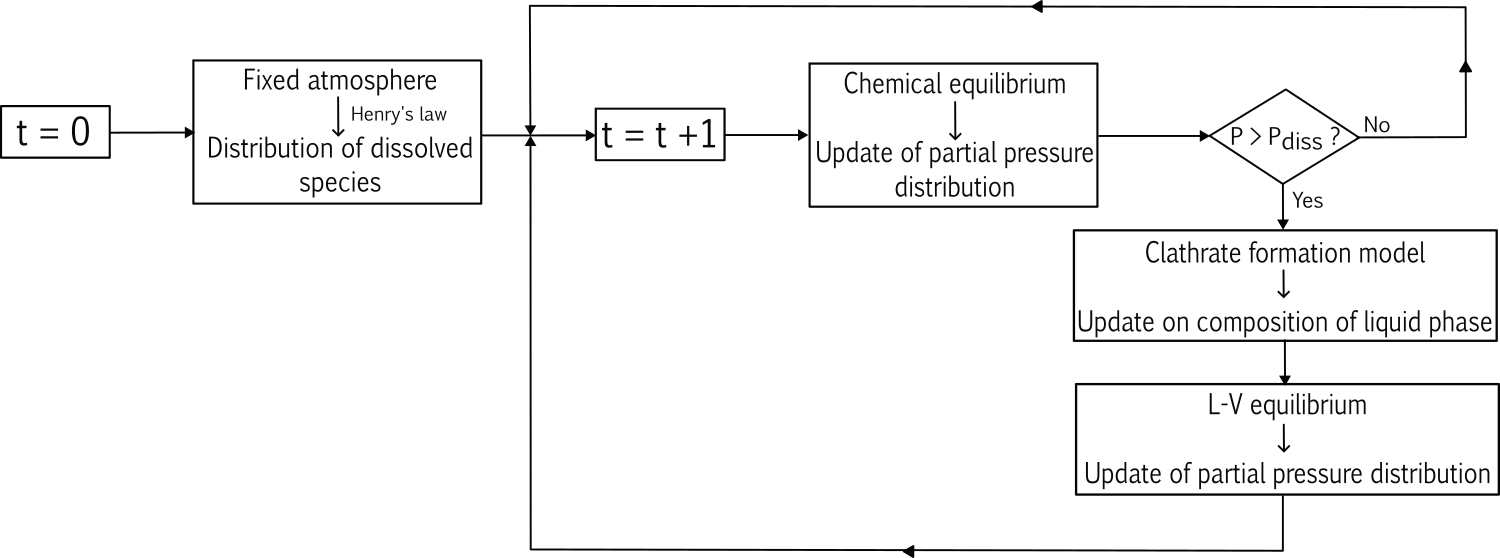- 1Aix-Marseille Université, CNRS, CNES, Institut Origines, LAM, Marseille (alizee.amsler@lam.fr)
- 2Aix-Marseille Université, CNRS, CNES, Institut Origines, LAM, Marseille, France (olivier.mousis@lam.fr)
- 3Institut Universitaire de France (IUF) (olivier.mousis@lam.fr)
- 4Aix-Marseille Université, CNRS, Institut Origines, PIIM, Marseille, France (alexis.BOUQUET@univ-amu.fr)
- 5Aix-Marseille Université, CNRS, CNES, Institut Origines, LAM, Marseille, France (alexis.BOUQUET@univ-amu.fr)
- 6Aix-Marseille Université, CNRS, CNES, Institut Origines, LAM, Marseille, France (trinhhoangdieungan@gmail.com)
- 7University of Science and Technology of Hanoi (USTH), (trinhhoangdieungan@gmail.com)
- 8NASA Goddard Space Flight Center, Greenbelt, MD, USA (kathleen.mandt@nasa.gov)
Titan is the only moon of the solar system harboring a thick N2-rich atmosphere, as well as a subsurface global ocean covered by an ice crust. To explore the origins and evolution of Titan’s present hydrosphere volatile inventory, it is necessary to retrace the influence of the moons’ formation scenarios on this inventory. To do so, we need to explore the post-accretion processes that could impact the distribution of volatiles in the hydrosphere. Especially, we investigate the evolution of the early “open-ocean” phase of Titan, which took place shortly after accretion before the ice crust formation.
Our work focuses on modelling the ocean-atmosphere equilibrium which took place over this period, coupled to a statistical clathrate formation model (fig1). Hence, we compute the vapor-liquid equilibrium between the early atmosphere and ocean, as well as the chemical equilibria happening within the ocean, following the approach described by Marounina et al. (2018) [1], to investigate the primitive hydrosphere of Titan. This approach is coupled to a statistical thermodynamic model introduced in Mousis et al (2013) [2], to assess how clathrates formation impact the early atmosphere and the liquid phase’s composition throughout time. By exploring different building blocks composition and how they affect the primordial hydrosphere composition, we highlight the consequence of the ratio of dissolved CO2 and NH3 on the distribution of partial pressures in the primordial atmosphere of Titan as well as the composition and buoyancy of clathrate hydrates formed in the ocean.

Fig1: Model loop scheme. At each time step, the thermodynamical equilibrium between the primordial atmosphere and ocean is computed. If the conditions to form clathrate hydrates are met, the composition of the liquid phase is updated, and the equilibrium recalculated.
Our coupled model allows for an assessment of the impact of the initial distribution of volatiles on the thermodynamic equilibrium between the early moon’s atmosphere and ocean, with or without clathrate formation throughout time. Based on a range of volatile distributions brought by the accreted material of cometary origins, different formation scenarios of Titan’s primordial hydrosphere are then investigated. Such a model highlights the influence of aqueous species’ chemistry on volatile’s dissolution in the ocean, especially CO2 and NH3, and how clathrate hydrate formation can further impact this distribution.This model will be further improved considering geochemical exchanges taking place between the moon’s rocky core and ocean.
References:
[1] N. Marounina, O. Grasset, G. Tobie, and S. Carpy, “Role of the global water ocean on the evolution of Titan’s primitive atmosphere,” Icarus, vol. 310, pp. 127–139, Aug. 2018.
[2] O. Mousis, A. Lakhlifi, S. Picaud, M. Pasek, and E. Chassefière, “On the Abundances of Noble and Biologically Relevant Gases in Lake Vostok, Antarctica,” Astrobiology, vol. 13, pp. 380–390, Apr. 2013
How to cite: Amsler Moulanier, A., Mousis, O., Bouquet, A., Trinh, N. H. D., and Mandt, K. E.: On the evolution of the primordial hydrosphere of Titan, Europlanet Science Congress 2024, Berlin, Germany, 8–13 Sep 2024, EPSC2024-226, https://doi.org/10.5194/epsc2024-226, 2024.